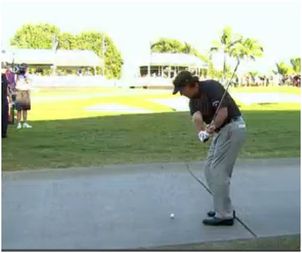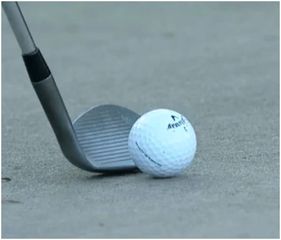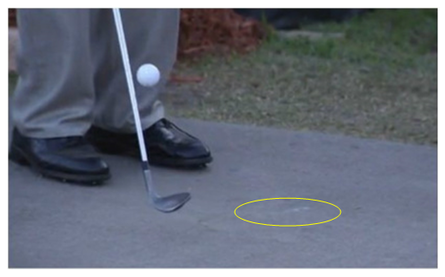 PGA Tour star Phil Mickelson's shot from a cart path at the 17th hole during the second round of the World Golf Championship - Cadillac Championship at the Doral Golf Resort and Spa had spectators and even Steve Sands the interviewer from the Golf Channel in awe. But listening to Phil during the post round interview he was matter of fact about the shot. Why was this so? The reason is that he has practiced this type of shot before (many times) and knows what to expect, and could factor in the variables for the 47 yard pitch shot. A player like Phil at some point during practice sessions has put himself in situations that most golfers would probably only find them in once a year and learn't how to play that shot. In the interview he explained that he had to carry the ball 30 yards in the air to the putting surface and he knew that the club head would bounce off the cart path with an ascending strike and launching the ball higher. This creates an extra five yards of carry and roll out to the 47 yard hole position. It was the same on the 5th hole when he missed the fairway and he knew that from the rough the ball would not have any backspin so he factored the extra roll and went on to make a birdie which kicked started his round, resulting in a 67 at the end of the day.  As Phil explained "when you're on a cart path you don't need to open the club face as that adds "bounce" which raises the leading (bottom) edge of the club face which will hit the ball above the equator resulting in a "thin" shot and the ball flying further than you want over the green." He advised a square club face as shown in the picture on the left which keeps the "bounce" below the equator of the ball. Secondly you need to understand that the club (which normally on turf with a wedge would be descending) in this circumstance the cart path is going to make the club head bounce and hit the ball with an ascending strike. So just like Phil we at Pro Tour Golf College regularly make our students practice hitting shots from unlikely positions we refer to as "trouble shots" and learn the different techniques required, and also anticipate the type of trajectories and spin variables that each situation brings. And just like Phil it doesn't seem like an amazing shot because you already know the outcome before you execute the shot.  An interesting observation after Phil made the shot is there is a mark on the cart path just behind where the ball was, and another mark in front of where the ball lay! Now Phil said that after striking the cart path the club-head is ascending so how did that second mark come about? Well I have to get help from Isaac Newton and his Laws of Motion and in particular his 3rd Law of Motion which states "For every action there is always an equal and opposite reaction." Therefore that second mark came about when the club head struck the ball applying force to it and the ball in turn applied that force back to the club-head causing it to descend down to the cart path for a second time. Mystery solved! Now the next time you practice your green-side scrambling skills make sure you also practice the "trouble shots" from the difficult lies around the green, so that if you ever get faced with a situation similar to Phil's, you can be confident that you've practiced it so that it is likely it will pay off for you. Not to mention that it's fun to practice the strange and unusual shots. David Milne and Lawrie Montague - Pro Tour Golf College Your Success On Tour is Our Business Comments are closed.
|
Archives
June 2019
|
Proudly Supported By
Copyright © 2011 - 2018 Pro Tour Golf College
Website Managed By Golf Performance Media
All Rights Reserved
Website Managed By Golf Performance Media
All Rights Reserved


 RSS Feed
RSS Feed



